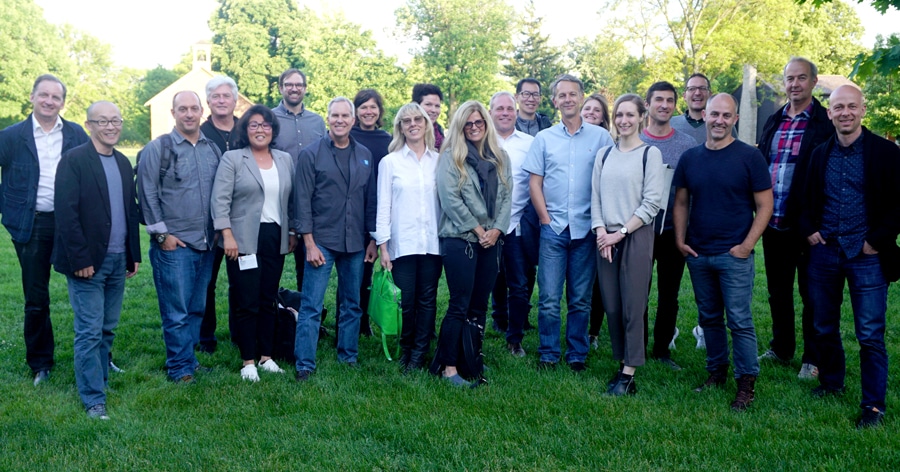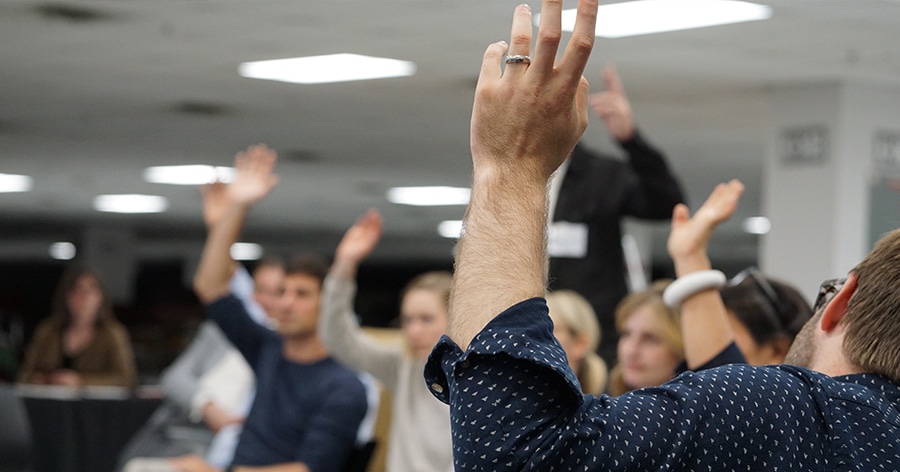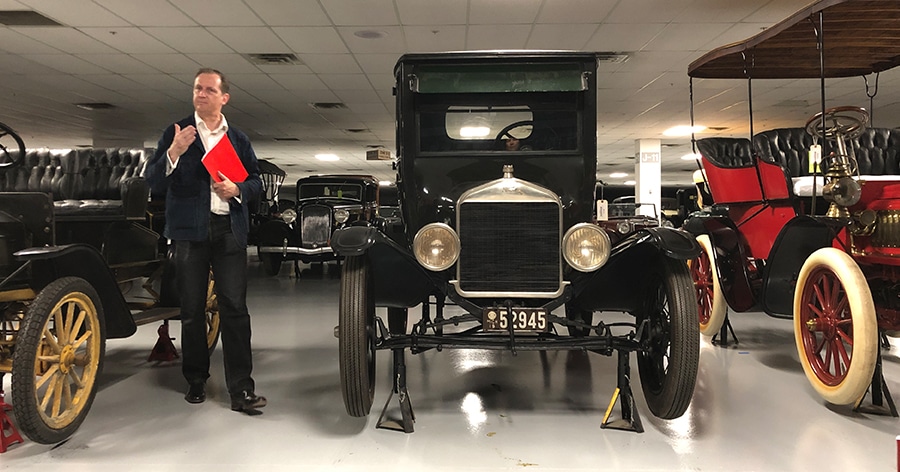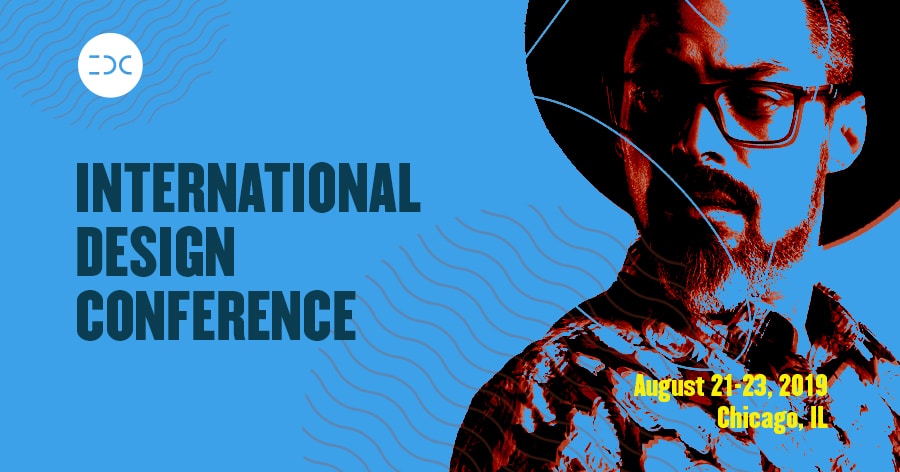In early June, select members of our 2019 IDEA Jury convened at The Henry Ford Museum in Dearborn, MI for four days of intensive work in selecting products that represent the very best our industry has to offer. It was a daunting task, with over 740 entries carrying over into round 2 of the competition. Our Jury Chair for the 2019 program, Maaike Evers, IDSA led the team through the process with uncompromising rigor and absolute focus on recognizing only the most deserving entries. IDEA is unweathered by shifting fads or transitory styling. Rather, its winners reveal the tremendous significance of design in business, society and beyond. Furthermore, the winners prove that great results are possible when design is leveraged to its fullest potential.

Carl Liu, Mark Evans, Clair Gottschalk, Jillian Tackaberry, Jesse Menayan, Michael DiTullo, Gabe Lamb, Adam Brodsley, Robert Murdock.
In an inconspicuous backlot storage warehouse on the campus of The Henry Ford Museum, the Jury went through all round 2 entries with meticulous care, robust debate and obsessive attention to detail. Spread out before them were hundreds of products on display, and they evaluated each across IDEA’s long-standing criteria:
- Design Innovation: How is this design unique or innovative compared to other designs in this category?
- Benefit to the User: How does this design benefit the intended user through its performance, comfort, safety, ease of use, affordability, etc.?
- Benefit to the Client: How does this design improve the client or manufacturer’s profitability, brand reputation, employee morale, etc.?
- Benefit to Society: How does this design benefit the greater good; consider society, the environment, culture, the economy, etc.?
- Appropriate Aesthetics: How is this design unique or innovative compared to other designs in this category?
The program is, by design, meant to highlight complete design solutions. It’s not enough to have beautiful styling. Form factor is only one part of our criteria. We encourage our judges to consider the totality of a product. How does it work within the user’s daily life? How is it providing value? What materials is it made of, and has the circularity of its existence been considered by the designer(s) responsible for bringing the product to market? Also, what problem is it solving? Does this product need to exist in first place?

Says Robert Murdock, director of Amazon’s UX Lab, “IDEA helps capture a cultural snapshot for the state of design from year to year. Identifying excellent work, then preserving it, is an important function that only an independent, industry-recognized organization can provide.”
Originally founded to recognize exceptional achievement in industrial design, the program has since grown to highlight design in many forms, including design strategy, branding, digital interaction and much more. No matter the category, what is central is the importance of a holistic solution that embodies much more than just a novel “idea.”
Says Jillian Tackaberry, industrial designer at MNML, “As technology and culture continue to evolve, it’s important to highlight when the things we create are providing an important contribution to society. IDEA helps to give exemplary designs that recognition.”

Big thanks to the curatorial team at The Henry Ford Museum, who have graciously hosted our round 2 judging sessions for over a decade. One special item we got to see this year was a Model T, previously owned by none other than Henry Ford himself. This priceless vehicle from 1919 has been carefully preserved in its astonishing originality. Its dark green paint finish, unique among all other Model T’s of this era, shines with a deep brilliance, even in the dim lighting of a backlot storage warehouse. Hidden treasures like this one provided inspiration and context for our 2019 jury cohort as they carefully evaluated designs from the modern era.
Furthering the significance of winning an IDEA is the fact that all Gold, Silver, and Bronze designs are entered into the permanent collection of The Henry Ford Museum. There they will remain for future generations to learn from and enjoy.
Curious to know who won this year? So are we! Join us for the public announcement of IDEA winners and presentation of Gold, Silver and Bronze trophies at the IDEA Ceremony and Gala on August 21, 2019 in Chicago, IL. This event brings together top designers from around the world for a celebration unlike any other. It’s a moment for designers to acknowledge the amazing work of their peers and revel in good company. We’ll finish the evening with a Gala reception on the 10th floor of Venue SIX10, with its floor-to-ceiling windows and a panoramic view of Lake Michigan.

But it doesn’t stop there. IDSA’s International Design Conference completes the experience, and is set to take place August 22–23, 2019. The IDC is a celebration of the diversity, overlap and undeniable power of design. Join us for an experience unlike any that IDSA has put on before.
